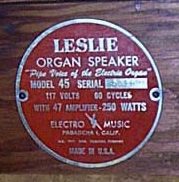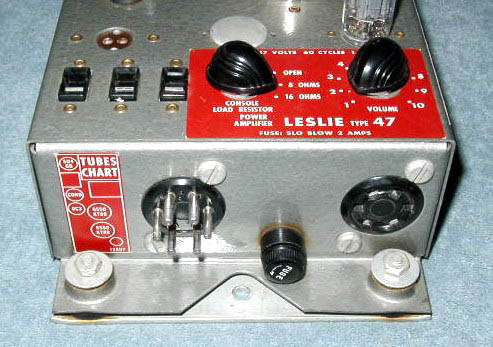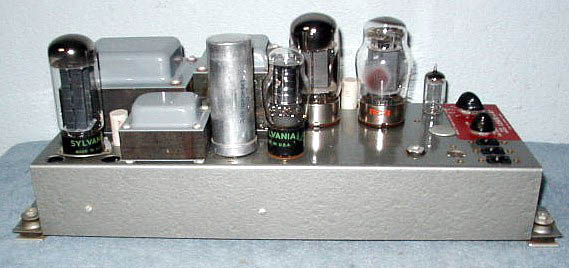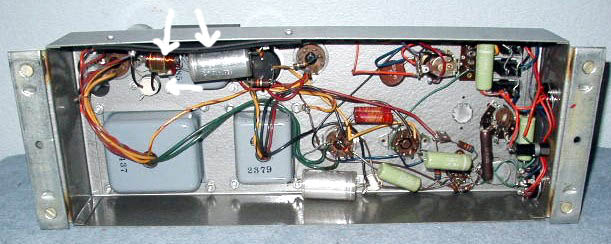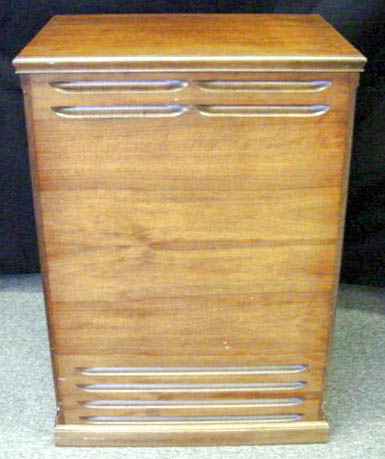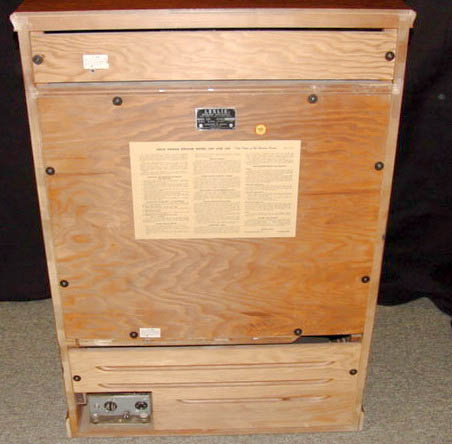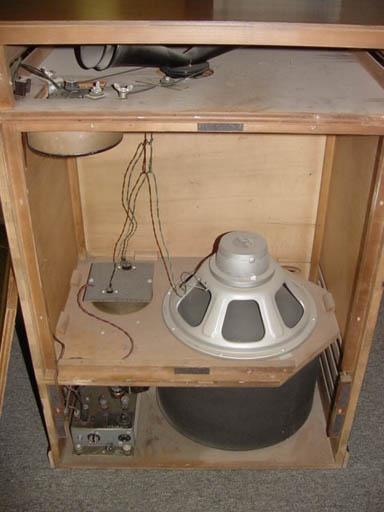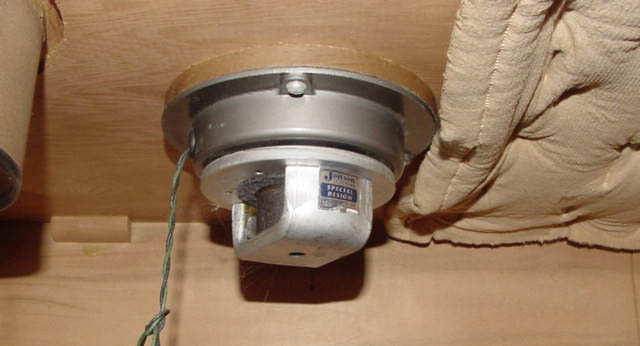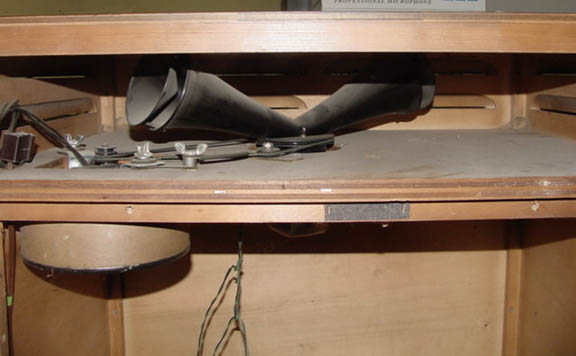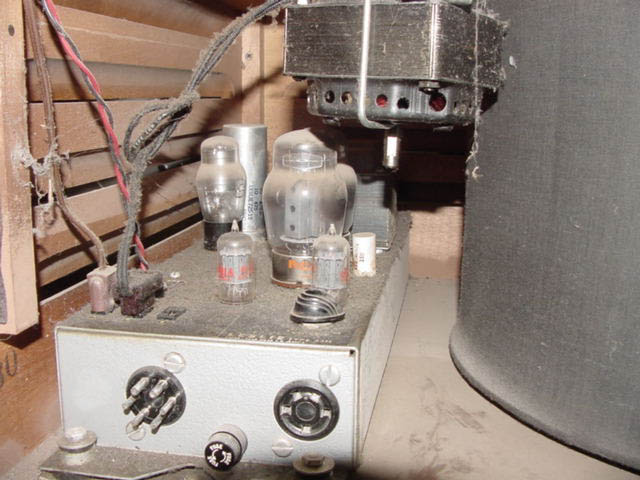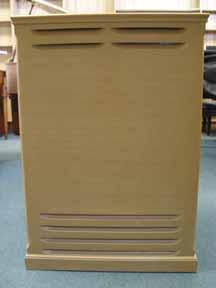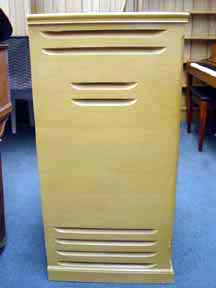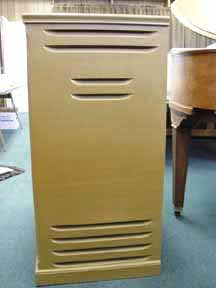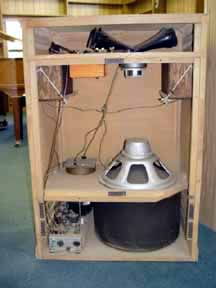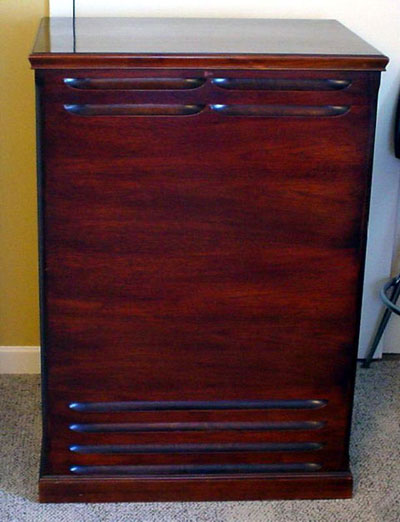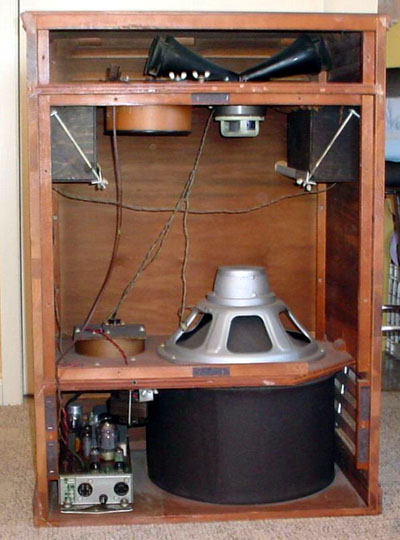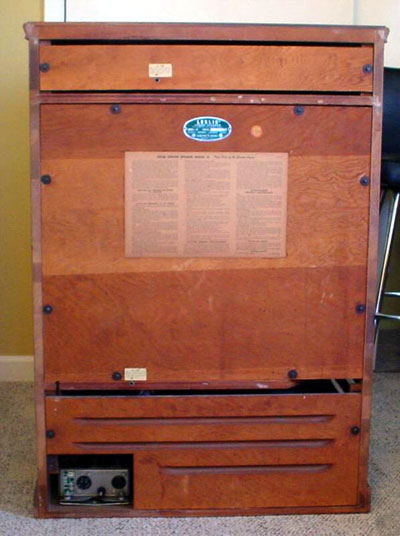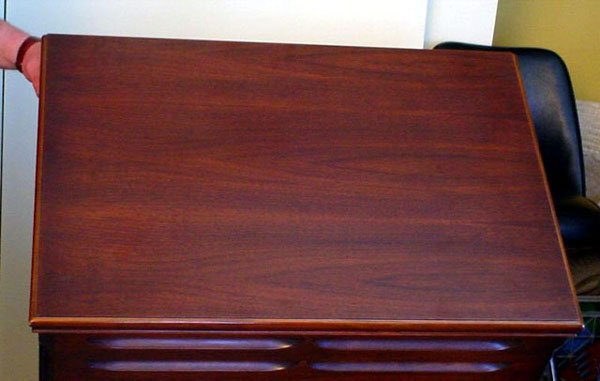|
2nd generation speakers
|
|||||
|
.
|
|
||||
|
Around 1958 the next generation of
Leslie speakers was issued. The new speakers had slightly altered cabinet
designs. A new amplifier design was also introduced: The 'classic' Leslie
amp with 6550 tubes, OC3 regulator tube and miniature noval socket phase
splitter and control tubes. The first version of these amplifiers had a tube rectifier and was rated at 35W. The second version had solid state rectifiers and was rated at 40W. The circuit design in Leslie tube amplifiers has changed very little since the 40W came out. The bass speakers in the new cabinets were permanent magnet types |
|||||
|
Close-up of the first version of the Leslie 47 amp -
with the tube rectifier The new models were denoted 22H,
45, 47 and 51/51C, replacing models 21H, 44W, 46W and 50C respectively. (You can read more about the 31H series in 'The Tall Boy Section')
|
|||||
|
|
|||||
|
The brake circuit of the 47 amp is shown with the arrows. The single diode in the circuit is the red/white cylinder partly obscured by the noise suppressing choke.
|
|||||
|
The horn, top motor enclosure and
part of the 15" bass speaker in a Leslie 45 |
|||||
| Leslie 22H Pictures kindly supplied by Fabtech Inc., Mesa, Arizona, U.S.A. |
|
||||
|
Light walnut finish - slightly sunfaded
|
Note the instruction sheet on the middle back panel. Unlike on the later 2-speed models, the middle back panel is solid. The bass ports are instead made as cut-aways in the bass baffle (see below). |
||||
|
The Leslie with the back panels removed. The horn motor is enclosed in a round 'can' and the power to the motor is fed to it from the top. |
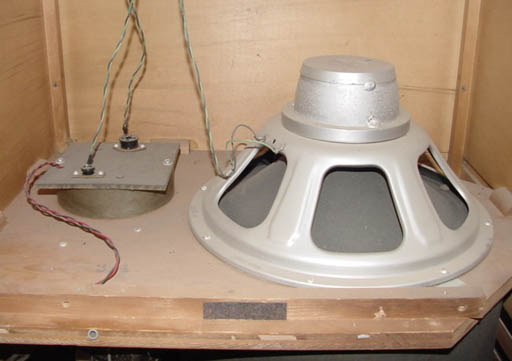 The 15" bass speaker, permanent magnet, 16ohm Jensen as in the later models. Note the cut-aways at 45 degrees. These are the bass ports for the speaker cabinet. |
||||
|
The treble driver, Jensen V-21, 16ohm. On the right is some acoustic padding to dampen resonances from the upper shelf
|
|||||
|
A closeup of the treble horn. Note that the horn is placed almost in the centre of the shelf and not slightly to the right as in the later 2-speed models
|
|||||
|
The 40W 22H amp, the motor for the lower motor and part of the rotor itself. The label on the amp chassis is black with white lettering, indicating that this is a Hammond-type Leslie (the 47 amp had a red label, the 51 amp a green label). This colour coding was maintained in the later Leslie models. All single speed Leslies had 'daisy-chain' sockets on the amplifier where a second speaker could be attached. This socket was eliminated on the 2-speed models partly because UL did not find it safe and partly because the new 2-speed design demanded four motor sockets instead of only two. The space problem was solved by moving the input (male) amphenol connector to the position where the female socked used to be and move one set of motor plugs to the front of the amplifier . |
|||||
| Leslie
51C Pictures kindly supplied by www.jacksmusicstore.com in Corunna, MI, USA.
|
A beautiful piece, this one. Most
likely made to match an oak Conn organ. |
||||
|
|
Louvres for the second channel speakers on both sides. |
|
|||
|
|
A look at the insides of the 51C - note the upper motor is in a square wooden box and not in a round 'can'. The bass speaker is the familiar Jensen P15LL. |
 |
|||
 |
A close-up of the lower compartment. The motor is nice and black with no rust and the scrim cloth seems to be in good shape. | ||||
| Finally, the 51C with the back panels on. Although the panels are not finished as such, it's nice that they somewhat match the oak finish of the rest of the cabinet. The oval model tag suggests this is the early version of this model. As far as I know, the 'C' was dropped from the model name when the Hammond organ model A-100 was introduced in 1959 (see below). The tag also dropped the 'made for the Conn organ'. Later still, the tag was made square instead of oval, but retained the green colour originally associated with 'Conn' type speakers. |
|
||||
| Leslie 51 Pictures kindly donated by Mark Miller in New York State, USA. |
A nice dark walnut |
||||
|
The tag not mentioning the Conn organ anymore. |
|||||
|
|
|
||||
|
Some really nice wood here |
|||||
